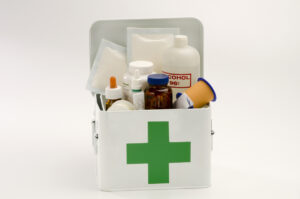First Aid Tips for Dry Ice Burns and Injuries

Dry ice burns are very serious and require quick and precise first aid.
Dry ice, or solid carbon dioxide, is an incredibly useful substance with various applications, from preserving food to creating smoke effects in theatrical settings. However, due to its extremely low temperature of -109.3°F (-78.5°C), dry ice can cause severe injuries if it comes into direct contact with skin. Burns from dry ice, known as frostbite injuries, occur quickly and can be painful and dangerous if not properly treated. Understanding first aid steps and safety precautions is crucial to minimizing the risk of dry ice burns and handling injuries effectively.
Understanding Dry Ice Burns
When dry ice touches the skin, it causes rapid freezing of the tissue. This can lead to frostbite, a type of burn that damages the skin and underlying tissue, similar to heat burns but due to extreme cold. Unlike a traditional burn, the cells are injured by ice crystals forming within them, leading to cell death. The skin may become red, blistered, and feel numb or tingling. Severe exposure can cause tissue to turn white or even black if frostbite progresses to its most extreme stages.
Symptoms of a Dry Ice Burn
Dry ice burns have distinct symptoms, including:
- Immediate redness and intense pain at the point of contact
- Numbness in the affected area due to nerve damage
- A white, waxy appearance to the skin
- Possible blistering or even blackened tissue in severe cases
If the exposure to dry ice is prolonged, the risk of more severe frostbite increases, which may lead to permanent tissue damage.
First Aid Steps for Dry Ice Burns
If you or someone else experiences a dry ice burn, here are the first aid steps to take immediately:
Step 1: Remove the Source of Contact
The first priority is to eliminate further exposure to dry ice. Carefully remove any dry ice or contaminated clothing that may still be in contact with the skin to prevent additional freezing of the tissue.
Step 2: Slowly Rewarm the Affected Area
It’s essential to rewarm the affected area gradually. Placing frostbitten skin in warm water (between 99°F and 104°F or 37°C to 40°C) for 15–30 minutes can help. Avoid hot water, as this may cause further damage to the sensitive tissue. Gently moving the affected area while it warms up helps restore circulation.
Step 3: Avoid Rubbing the Area
Rubbing or massaging a dry ice burn can cause more harm to the damaged tissue. The ice crystals formed within the cells make the tissue fragile, and friction can worsen the injury, leading to more extensive cell death.
Step 4: Apply a Sterile Dressing
After rewarming, apply a sterile, non-stick dressing to the area to prevent infection. If blistering has occurred, take extra care not to pop the blisters, as open blisters increase the risk of bacterial infection.
Step 5: Take Pain Relievers if Necessary
Dry ice burns can be painful even after the initial rewarming, and over-the-counter pain relievers like ibuprofen or acetaminophen may help relieve discomfort. Avoid applying ointments or creams unless directed by a healthcare professional, as they may interfere with healing.
Step 6: Seek Medical Attention if Needed
If the burn is extensive, if there are signs of severe frostbite (such as blackened skin), or if the area becomes infected, seek medical help immediately. Symptoms of infection include redness, warmth, pus, or increased pain around the wound. Severe dry ice burns can require professional wound care, and in some cases, surgical intervention may be necessary.
Preventing Dry Ice Burns
Prevention is always the best approach. Here are some safety tips to avoid dry ice injuries:
- Wear Protective Gear: When handling dry ice, always wear thick, insulated gloves. Leather or specialized thermal gloves are ideal, as they provide a barrier against cold temperatures.
- Use Tools for Handling: Avoid directly handling dry ice with your hands. Use tongs, an insulated container, or other tools when moving or working with dry ice.
- Work in a Ventilated Area: In addition to physical burns, dry ice can pose a risk of suffocation because it releases carbon dioxide gas. Always work with dry ice in a well-ventilated space to prevent dangerous CO₂ buildup.
When to See a Doctor
Certain situations call for professional medical evaluation. Seek a healthcare provider’s guidance if:
- The burn covers a large area or is located on sensitive areas such as the face or hands.
- You notice worsening pain, swelling, redness, or discharge from the wound, indicating a potential infection.
- There are signs of severe frostbite, such as tissue discoloration or blackened skin, which may require advanced treatment.
Dry Ice For All Your Needs
Dry Ice Corp is the largest regional supplier of dry ice and related products in the Northeastern United States. Our ice is fresh and delivered right to your doorstep. We are happy to help you determine the best way to ship your goods, whether you have a huge amount of cookies or a single pie, and help you select the perfect amount of dry ice for the job. Give us a call at (201) 767-3200 or contact us online for a quote. To connect with us online, be sure to follow us on Facebook, Pinterest, and Twitter.



